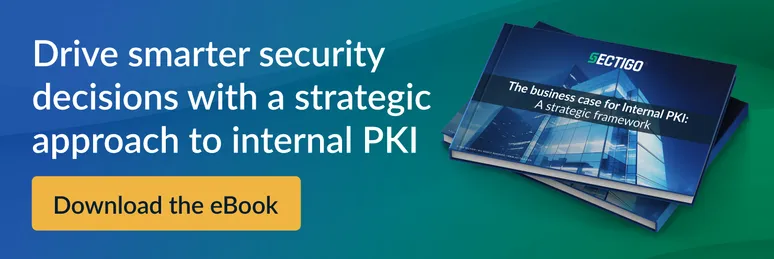From bottleneck to business enabler: making PKI work for digital transformation


Traditional PKI often creates security and agility bottlenecks due to manual processes and poor integration. As enterprises adopt cloud, DevOps, and Zero Trust, automated and scalable certificate management becomes essential. Modern PKI solutions must offer automation, policy enforcement, seamless integration, and broad coverage. Automated Internal PKI provides centralized control and lifecycle automation, enabling secure, efficient digital transformation.
The challenge: security vs. agility in traditional PKI
Balancing effective security with operational agility is a constant challenge in enterprises, especially in traditional PKI environments. Outdated processes and system complexity often stand in the way of innovation, making it difficult to keep pace with today’s speed and scalability demands.
Legacy PKI creates bottlenecks across the enterprise
As companies embrace hybrid cloud and DevOps environments, IT teams need to issue certificates instantly, secure remote access, and keep workloads moving. But legacy PKI slows them down with manual approvals, clunky workflows, and poor API integrations leading to deployment delays, blind spots, and mounting operational risk.
In these outdated environments, certificate provisioning becomes a manual, time-consuming process. Developers are left waiting for approvals. Operations teams struggle to track renewals. Security teams lack the tools to enforce policy consistently across diverse platforms. In the end, security becomes a bottleneck, and innovation slows to a crawl. Organizations that once moved fast are now held hostage by their infrastructure.
Modern business demands require modern PKI
This is especially problematic as enterprises pursue major digital initiatives rolling out microservices, moving to the cloud, and implementing Zero Trust architectures. Each of these efforts requires frequent, automated certificate issuance and revocation. Without a scalable PKI solution, the infrastructure can’t keep up, and risks mount with every manual task.
What to look for in a scalable Internal PKI solution
When evaluating an internal PKI solution, organizations should consider the below points as part of their decision-making process:
- Automated certificate lifecycle management: Enables automatic issuance, renewal, and revocation of certificates to eliminate manual tasks and reduce human error.
- Policy-based control and governance: Ensures consistent enforcement of certificate standards across environments, aligning with compliance and security policies.
- Seamless integration with identity, network, and DevOps tools: Supports interoperability with existing systems and workflows to avoid disruption and maximize operational efficiency.
- Support for standard protocols (REST APIs, ACME, EST, SCEP): Critical for embedding certificate issuance into CI/CD pipelines and enabling automation, ensuring compatibility across systems, enhancing security, and simplifying compliance.
- Comprehensive certificate coverage: Capable of issuing and managing certificates for mobile devices, unmanaged endpoints, APIs, microservices, and cloud-native workloads.
- Unified policy enforcement across hybrid and multi-cloud environments: Maintains centralized control and visibility, ensuring governance at scale across diverse infrastructure.
- Strategic business enablement: Empowers teams to innovate and scale securely, turning internal PKI into a business enabler rather than an operational bottleneck.
Why Sectigo’s internal PKI stands out
Sectigo’s internal PKI solution gives organizations the control they need to stay ahead of risk. With a centralized, single-pane-of-glass interface, teams can eliminate certificate-related blind spots, ensure timely renewals, and automate the entire certificate lifecycle—keeping services running and outages at bay.

